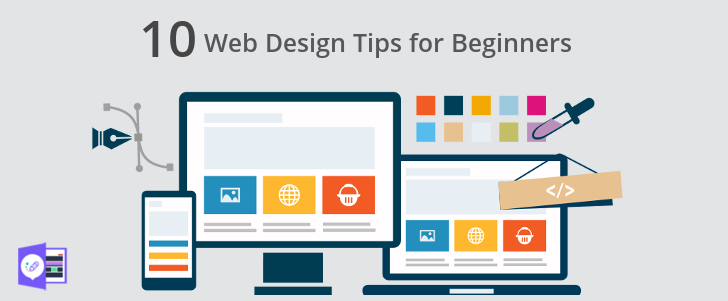Custom Post Types represent a potent feature within the WordPress platform, serving as a valuable mechanism for structuring and presenting distinct content on a website.
This discussion will delve into the advantages associated with the utilization of custom post types, the procedures involved in creating them within the WordPress hosting environment, and an overview of the leading plugins designed to facilitate this process.
Ranging from Custom Post Type UI to Advanced Custom Fields, this examination will outline the optimal choices tailored to specific requirements and offer guidance on leveraging custom post types efficiently.
What Are Custom Post Types?

Custom post types in WordPress serve as a method for categorizing different content types on a website beyond the conventional posts and pages. They provide website owners with the capability to structure their content according to specific parameters and criteria.
For example, in scenarios where a website necessitates distinguishing between various product categories, services rendered, or portfolio items, custom post types can be established for each category. This approach not only optimizes the content management process but also enhances the user experience by delivering information in a structured and easily navigable format.
Through the capacity to define custom fields and taxonomies, users of WordPress can customize the presentation and functionality of each post type to align with their distinctive requirements and preferences.
Why Use Custom Post Types?
The utilization of custom post types in WordPress presents website designers and owners with the capability to efficiently organize and exhibit unique content tailored to their specific requirements. By making use of custom post types, users can establish a structured content management system that enhances the overall user experience.
This method allows for the categorization of diverse content types, including articles, products, portfolios, events, and more, facilitating users in navigating and locating specific information on the website. Moreover, custom post types offer an avenue for heightened content customization through the inclusion of specific fields and parameters that are pertinent to each content type. This meticulous organization not only streamlines content management processes but also contributes to elevated user engagement and a visually appealing presentation of information.
1. Organize Content
Implementing custom post types in WordPress for content organization offers a systematic method for managing content. Defining specific taxonomies and categories enables website owners to streamline the organization of their website and enhance the overall user experience.
This structured approach not only enhances the backend functionality of the website but also plays a vital role in improving frontend user engagement. Effective categorization of content through taxonomies allows visitors to navigate the site with ease, facilitating the discovery of relevant information effortlessly.
Utilizing categories and tags aids in grouping similar content together, thereby simplifying the process for users to explore related posts or articles. By establishing a well-structured system, website owners can cultivate a seamless browsing experience that captivates visitors and encourages them to delve deeper into the content available on the site.
2. Display Unique Content
Custom post types in WordPress are a valuable tool for presenting unique content in an aesthetically pleasing manner. Website owners have the ability to create custom templates that effectively showcase specific types of content, thereby enhancing both the design and functionality of the website.
The use of custom post types allows for a structured presentation of a website’s content, ensuring that visitors can easily navigate and access pertinent information. The adaptability provided by custom templates permits a personalized approach to content presentation, which can have a significant impact on both the visual appeal and user experience. Additionally, the inclusion of distinct post types presents opportunities for improved search engine optimization (SEO), as targeted keywords associated with the unique content can be strategically incorporated to enhance visibility and engagement.
In conclusion, custom post types are instrumental in enhancing the design, functionality, and overall user engagement of a WordPress site.
How To Create Custom Post Types in WordPress?
The process of creating custom post types in WordPress entails the utilization of plugins or custom coding to establish specific content structures and fields. This allows website administrators to tailor the post types according to their unique requirements, thereby improving the overall user experience.
Plugins such as Custom Post Type UI or Toolset Types offer website administrators a user-friendly approach to creating and managing custom post types without the need for intricate coding. These plugins provide intuitive interfaces that facilitate the definition of custom fields, taxonomies, and post relationships.
By incorporating custom fields, administrators can personalize the data input fields to align with their content needs, facilitating the collection and structured display of information. This heightened level of customization grants administrators greater flexibility and authority over the presentation of content on their WordPress site.
Top WordPress Plugins for Custom Post Types
In the realm of custom post types within WordPress, there exist several prominent plugins that provide comprehensive functionality for the creation and administration of custom content structures. These plugins seamlessly connect with the WordPress platform, augmenting the website’s capabilities.
One notable plugin in this domain is Advanced Custom Fields, renowned for its capacity to enable users to efficiently append custom fields to posts, pages, and custom post types. This versatile tool enables users to customize their content by incorporating a diverse range of field types, encompassing text, images, and even relationship fields.
Another critical plugin conducive to the management of custom post types is Custom Post Type UI. This tool streamlines the process of establishing and overseeing custom post types and taxonomies. Through its user-friendly interface, users can effortlessly configure new content structures and taxonomies without necessitating any proficiency in coding.
1. Custom Post Type UI

The Custom Post Type UI plugin is widely recognized in the WordPress community for its user-friendly interface tailored for creating custom post types. Noteworthy for its responsiveness and mobile-friendliness, this plugin stands as a preferred choice for website owners seeking to elevate the presentation of their content.
Distinguished by its intuitive design and accessible features, Custom Post Type UI enables users to customize post types with ease, eliminating the necessity for intricate coding proficiency. The seamless responsiveness of this plugin ensures optimal display of content across a spectrum of devices, ranging from desktop computers to smartphones and tablets. By harnessing its mobile-friendly design attributes, website owners can effectively interact with audiences across varied platforms, fostering a cohesive and optimized experience for all visitors.
2. Pods – Custom Content Types and Fields
Pods is a versatile WordPress plugin that facilitates the creation of custom content types and fields in a user-friendly manner. It allows for the inclusion of metadata and shortcodes to enhance content management and presentation.
Through the utilization of Pods, content creators are enableed to establish distinct data structures for various content types, such as products, events, or team members, thereby enhancing the organization of their websites. The integration of metadata attributes serves to enrich content by offering additional context, rendering it more discoverable and optimized for search engine optimization (SEO) purposes.
The provision of shortcodes by Pods simplifies the embedding of dynamic content elements within posts or pages, facilitating seamless customization and fostering enhanced user engagement. This amalgamation of metadata and shortcode functionalities distinguishes Pods as a robust solution for efficiently tailoring WordPress websites to specific requirements.
3. Toolset Types
Toolset Types is a robust WordPress plugin that facilitates the creation of custom post types through the use of blocks and widgets. This plugin offers a comprehensive solution for organizing content and enhancing the functionality of websites.
By leveraging the versatility of blocks and widgets, users can easily tailor and personalize their post types to meet their specific requirements. The drag-and-drop interface provided by Toolset Types streamlines the process of structuring content elements and seamlessly integrating dynamic widgets.
Whether the objective is to create custom portfolios, product listings, event calendars, or any other distinctive content structures, this plugin provides users with the capability to achieve this effectively and accurately. The smooth incorporation of blocks and widgets ensures an aesthetically pleasing and user-friendly layout, enabling websites to distinguish themselves in terms of both design and functionality.
4. Advanced Custom Fields
The Advanced Custom Fields WordPress plugin is widely recognized for its seamless integration capabilities and dynamic content display functionalities. This plugin provides website owners with a versatile solution for developing custom post types with a wide range of content options.
Users are enableed by this plugin to define custom fields within their posts, pages, and custom post types, thereby enhancing the presentation of content on their websites. Advanced Custom Fields allows for the incorporation of various data types, including text, images, files, and more, facilitating a highly adaptable and personalized content experience.
The support for repeater fields within the plugin enables users to efficiently manage and exhibit repetitive content structures, positioning it as a crucial tool for individuals aiming to optimize their content management processes.
5. Types – Custom Post Types, Custom Fields and Taxonomies
Types is a comprehensive WordPress plugin that facilitates the creation of custom post types, custom fields, and taxonomies. This tool enables website owners to design archive pages and exercise precise control over the layout and structure of their content.
By utilizing Types, users can effortlessly generate custom post types that align with their specific content needs, ensuring a tailored user experience. The plugin’s robust custom field management capabilities allow for the seamless integration of various data types within posts, improving the efficiency of information organization.
Furthermore, the taxonomy structuring feature enables easy categorization and tagging of content, thereby enhancing site navigation for visitors. Types also provides flexible options for designing visually appealing archive pages and fine-tuning layout control to ensure optimized content presentation and increased user engagement.
How To Choose the Right Plugin for Your Needs?
The selection of an appropriate plugin for custom post types in WordPress is contingent upon specific customization and search functionality requirements.
- When evaluating plugins for custom post types, it is crucial to assess their integration with the theme and existing plugins.
- Seek out plugins that offer a range of customizable options, including various post templates, custom fields, and taxonomies.
- Emphasize plugins that deliver robust search capabilities, facilitating user navigation and content location on the site.
- Additionally, ensuring compatibility with the latest WordPress updates is essential for the seamless operation of custom post types.
By meticulously considering these factors, one can effectively enhance the functionality and user experience of their WordPress website.
Tips for Using Custom Post Types Effectively
To fully leverage the advantages of custom post types within the WordPress platform, it is imperative to establish effective taxonomy structures and give precedence to enhancing user experience. Strategic planning and judicious use of taxonomies enable website owners to refine content organization and enrich user interaction.
This objective can be realized through meticulous evaluation of the various taxonomies at one’s disposal, including categories, tags, and custom taxonomies tailored to the specific content being curated. Crafting a coherent taxonomy hierarchy not only facilitates user navigation on the website but also aids search engines in comprehending the interconnections among distinct content categories. Incorporating pertinent keywords within the taxonomies can markedly amplify SEO efficacy and guarantee that the content is readily accessible to the intended audience.
1. Plan Ahead
It is essential to engage in strategic planning when developing custom post types within WordPress. It is imperative to delineate the categories, tags, and filters that will be utilized to efficiently organize content, thereby fostering a structured approach to content management.
By defining these categories and tags, one can streamline the content creation process and elevate the user experience on the website. The establishment of a coherent content organization strategy serves to optimize user navigation and enhance search functionality.
Consider how users will interact with the site and the keywords they may utilize to discover pertinent content. Integrating these keywords into category planning and content structuring will facilitate the generation of organic traffic and enhance the overall visibility of the site.
2. Use Taxonomies
The effective utilization of taxonomies within custom post types facilitates the streamlined categorization of content and the designation of post formats in WordPress. By incorporating taxonomies like categories and tags, website owners can optimize content organization and enhance user navigation.
This strategic approach not only assists in logically organizing content but also contributes to the enhancement of SEO endeavors. Through taxonomies, posts can be efficiently grouped and classified based on specific themes or topics, thus simplifying the process for users to access pertinent information.
The implementation of taxonomies within custom post types allows for the seamless integration of various post formats, including galleries, videos, or quotes, thereby improving the overall visual appeal and readability of the website. Moreover, this methodical classification system enables website administrators to provide a more customized and focused user experience, consequently elevating engagement and site retention metrics.
3. Consider User Experience
It is crucial to prioritize user experience in the management of custom post types within WordPress. To enhance user engagement and ensure a seamless content discovery process, it is advisable to consider integrating related posts, social sharing options, and intuitive navigation elements.
Related posts serve as an effective method to prolong user engagement on the website by providing additional relevant content for exploration. The inclusion of social sharing features facilitates easy dissemination of interesting posts among visitors’ networks, thus broadening the reach of the site.
Incorporating intuitive navigation elements, such as clear menus and search functionalities, simplifies the process for users to locate desired information. These user-centric design strategies are instrumental in elevating user satisfaction levels and enhancing the accessibility of content on the site.
4. Regularly Review and Update
Regular review and updates of custom post types in WordPress are essential to maintain data accuracy and metadata relevance. It is imperative for website owners to consistently evaluate the effectiveness of their content structures and make any necessary adjustments to enhance content visibility and searchability.
The monitoring of content performance enables the identification of areas that may require enhancement, offering valuable insights into user engagement and conversion rates. By incorporating pertinent keywords into both the metadata and content, website owners can improve the accessibility of their posts and, subsequently, elevate their search engine rankings. Additionally, routine maintenance of custom post types is instrumental in preventing outdated or irrelevant information that could potentially impact the overall user experience on the website.
Frequently Asked Questions
What are custom post types and why do I need plugins to organize and display them?
Custom post types are a feature in WordPress that allow you to create and organize different types of content on your website, such as events, products, or tutorials. Plugins are necessary to manage and display these custom post types because they provide additional functionality and customization options that are not available in the core WordPress platform.
What are the top WordPress plugins for custom post types to organize and display unique content?
There are several great plugins available for managing custom post types, but some of the most popular and highly recommended options include Advanced Custom Fields, Custom Post Type UI, and Toolset Types. These plugins offer a variety of features such as custom fields, taxonomies, and templates to help you organize and display your custom post types in a user-friendly way.
Can I use multiple plugins for managing custom post types on my WordPress site?
Yes, you can use multiple plugins to manage and display your custom post types. In fact, it is common for website owners to use a combination of plugins to achieve the desired functionality and design for their custom post types. Just be sure to carefully review the features and compatibility of each plugin before installing them on your site.
Are there any free plugins available for managing custom post types on WordPress?
Yes, there are several free plugins available for managing custom post types on WordPress. Some popular options include Custom Post Type UI, Types – Custom Fields and Custom Post Types Management, and Pods – Custom Content Types and Fields. These plugins offer basic functionality for creating and organizing custom post types, but may have limited features compared to paid plugins.
How can I ensure that my custom post types are displayed correctly on my WordPress site?
To ensure that your custom post types are displayed correctly on your WordPress site, you can use plugins that offer templates and custom fields. These features allow you to design and structure your custom post types in a way that is visually appealing and user-friendly for your website visitors.
Can I use these plugins to organize and display custom post types on an existing WordPress site?
Yes, you can use these plugins to organize and display custom post types on an existing WordPress site. However, it is important to note that some plugins may require additional configuration or changes to your site’s theme in order to function properly. It is always recommended to test the plugins on a staging site before implementing them on your live site.





